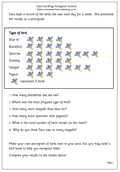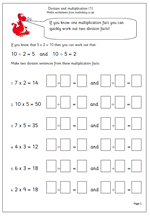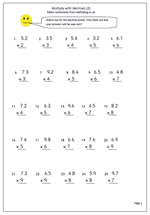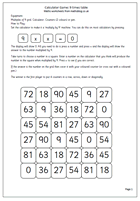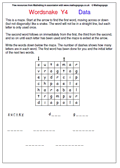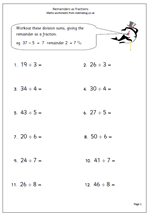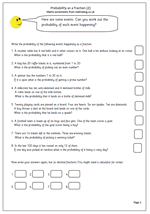Here we have another in our series of data handling worksheets for year 4. Each bird on the pictogram represents 5 birds. This page is a starter to show children how to complete and interpret a pictogram so that they can go on to create their own. In this case more information about the most common birds in the garden can easily be found on the internet and a hypothesis can be made as to whether a local survey would give similar results.
Year 3 maths worksheet: division and multiplication
It is important to show children the relationship between multiplication and division as this makes division so much easier.
Here we have a page which shows that if you know one multiplication fact you can quickly work out two division facts.
For example:
if you know that 5 times 7 is 35
then you can instantly work out that
35 divided by 7 is 5 and
35 divided by 5 is 7.
Knowing that you can do this greatly increases speed of calculating and it is speed, as well as accuracy that we are looking for. This page can be found in ourYear 3 Calculations section.
Year 6 maths worksheet: More revising multiplication
Here we have a follow up Year 6 maths worksheet to one published earlier, which looks at multiplying 2 digit numbers with a decimal point by one digit numbers. Nothing complex about this but it is a good check that children are confident with this before moving on to long multiplication using written methods. It is also a good test to see how well ‘tables’ are known as children who have a fast recall should be able to whizz through these quite quickly.
Some of these could be done mentally, but watch out for children who use a calculator and therefore show no working out. They should be carrying the units across from the tenths and showing this on the paper.
Coming soon: Multiplying decimals, division and standard metric units
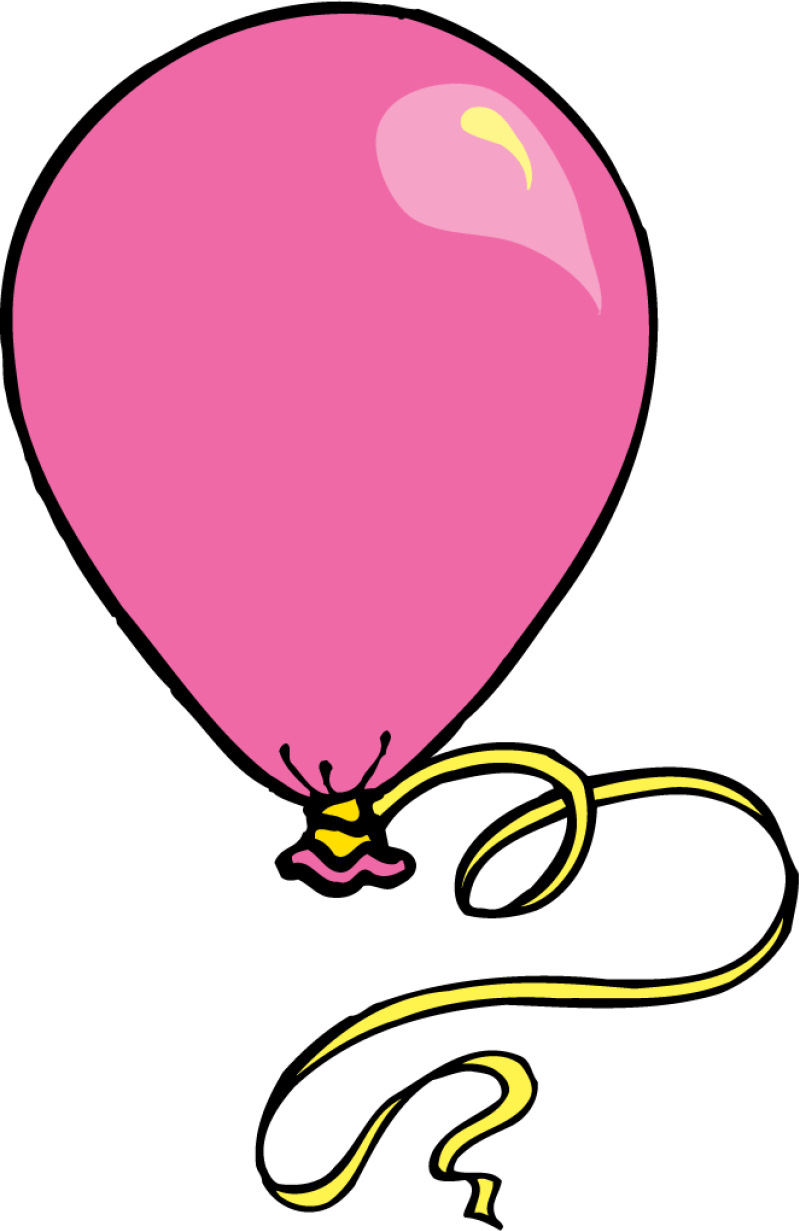 Next week we have a follow up Year 6 maths worksheet to one published earlier, which looks at multiplying 2 digit numbers with a decimal point by one digit numbers. Nothing complex about this but it is a good check that children are confident with this before moving on to long multiplication using written methods. It is also a good test to see how well ‘tables’ are known as children who have a fast recall should be able to whizz through these quite quickly.
Next week we have a follow up Year 6 maths worksheet to one published earlier, which looks at multiplying 2 digit numbers with a decimal point by one digit numbers. Nothing complex about this but it is a good check that children are confident with this before moving on to long multiplication using written methods. It is also a good test to see how well ‘tables’ are known as children who have a fast recall should be able to whizz through these quite quickly.
It is important to show children the relationship between multiplication and division as this makes division so much easier. We will be publishing a page for Year 3 which shows that if you know one multiplication fact you can quickly work out two division facts.
By Year 4 children should be quite familiar with the main metric units of measurement and to check this we have a straightforward page on metric units coming soon.
Year 5 Calculator game: 9 times table
Here we have a calculator game for two players. As well as the calculator you need the printed grid and some counters. Take turns to choose a number on the grid. Enter a number on the calculator that you think will produce the number in the square when multiplied by 9. if correct place a counter on the covering that number. Then it is your opponents turn. The aim is to get a line of four counters in a row, either across, down or diagonally.
These calculator activities can be found in year 5: Knowing Number Facts
10.10.10.10
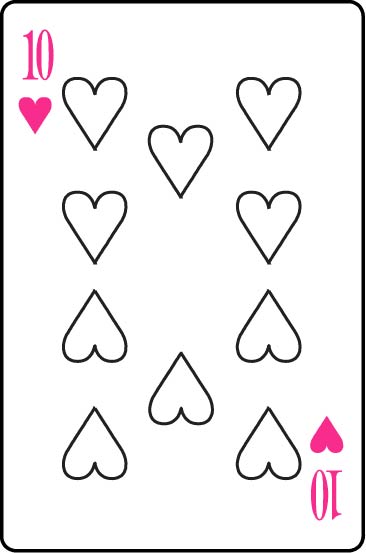 Followers of the site will know how much I love fascinating dates and we have another coming up this week. This date happens just once a century, so it is unlikely that many of us will be around to see the next one!
Followers of the site will know how much I love fascinating dates and we have another coming up this week. This date happens just once a century, so it is unlikely that many of us will be around to see the next one!
On the 10th second of the tenth minute of the tenth hour on the tenth day of the tenth month in the year 2010 the date will be:
10.10.10.10.10.10
(That’s the 10th October 2010)
But I am not alone. There are plenty of other people equally fascinated by dates and this particular date has led to a flurry of international activity. I will mention just two events which will be happening on the 10.10.10.
Firstly, celebration of the fiftieth anniversary of the publication of the children’s book, The Weirdstone of Brisingamen by Alan Garner. This is one of the best books written for the 9-11 age group. There will be special events at a weekend festival on Alderley Edge. If you haven’t read it and you like books about legends, then I highly recommend it.
Secondly, is your chance to document the World’s Story. On October 10, 2010 (10.10.10), across the planet, documentary filmmakers, students, and inspired citizens will record the human experience over a 24-hour period and contribute their voice to the largest participatory media event in history. This is known as ONE DAY ON EARTH.
Resource of the Week: Wordsnake on Handling Data
In our Puzzles section we have a number of great activities related to maths. Some of these are quite tricky, including the Wordsnakes. This particular one is all about the language of Handling Data – great for a wet playtime activitiy!
A Wordsnake is a little like a maze of letters. Start at the arrow to find the first word, moving across or down the grid of letters (but not diagonally) like a snake. The word will not be in a straight line but each letter in the grid can only be used once. The second word follows on immediately from the first, the third from the second and so on until each letter has been used and the maze is exited at the second arrow.
On this Wordsnake the first word has been done for you and the number of dashes shows how many letters there are in each word. As it is about data handling all the words are to do with this. Still not clear? Why not have a go as it is testing even for adults!
More maths games can be found in our Puzzles section
Year 4 maths worksheet: Remainders
By year 4 most children will be confident with the concept of remainders after dividing. The next step is to ‘neaten up’ the division so that there is no remainder. What is left becomes part of the answer as a fraction.
It is easy to write the remainder as a fraction as is shown on this worksheet. The top number is the number or remainder that is left when the whole number has been divided. The bottom number is the number that you have been dividing by.
So 54 divided by 5 is 10 remainder 4 which can be written as 10 and 4 fifths (4/5).
Year 6 maths worksheet: Probability as a fraction
Probability does cause some confusion with children, partly because it can be expressed in several ways.
One way of displaying the probability of an event is as a percentage: there is a 50% chance of landing on a head when tossing a coin.
Another way is as a fraction: there is 1/2 chance, or one in two chance of landing on heads.
A third way is as a decimal fraction, where zero means no chance and 1 is certain: there is 0.5 chance of landing on heads. Probability can be displayed along a number line marked from zero to one.
This year 6 maths worksheet is the second published which looks at probability as a fraction and then as a decimal fraction. A calculator would be useful to do the conversion and it is suggested that the answer should be displayed to 2 decimal places. A useful homework sheet.
Coming soon: Probability, remainders and the 9 times table
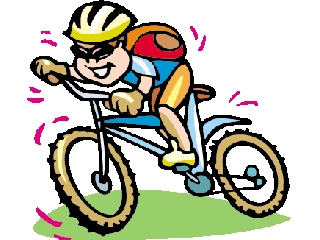 Next week we will be publishing the second year 6 maths worksheet which looks at probability as a fraction and then as a decimal fraction. A calculator would be useful to do the conversion and it is suggested that the answer should be displayed to 2 decimal places.
Next week we will be publishing the second year 6 maths worksheet which looks at probability as a fraction and then as a decimal fraction. A calculator would be useful to do the conversion and it is suggested that the answer should be displayed to 2 decimal places.
By year 4 most children will be confident with the concept of remainders after dividing. The next step is to ‘neaten up’ the division so that there is no remainder. What is left becomes part of the answer as a fraction. We have a great worksheet coming up which concentrates on writing remainders as fractions.
Also coming soon is another calculator game for two players concentrating on the 9 times table. As well as the calculator you will need the printed grid and some counters. This is most suited to year 5 children who should be confident with the 9 times table and be able to concentrate on strategies to win.
